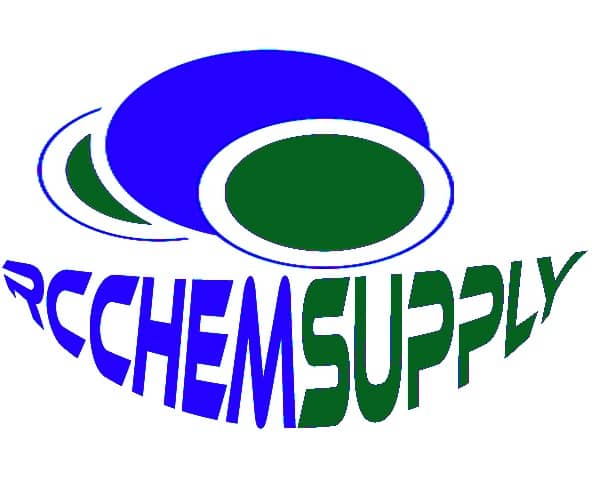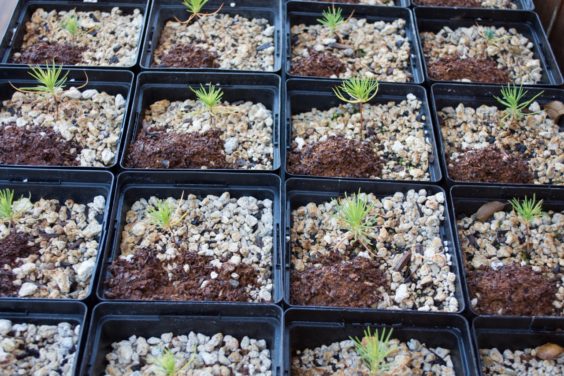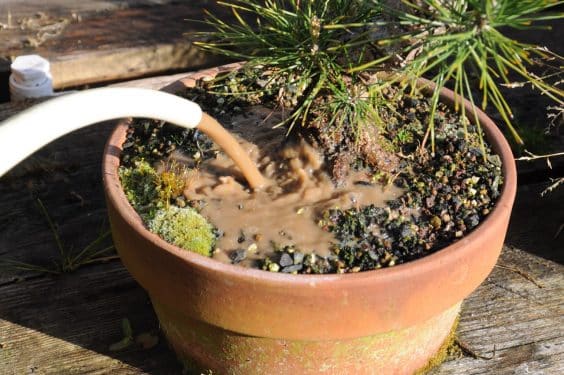Bonsai Tree Fertilizer Jwh-018
Bonsai trees are a delicate art form requiring meticulous care, especially regarding nutrition. Choosing the right fertilizer can make all the difference in ensuring your miniature trees thrive. Here, we’ll explore five top fertilizers, highlighting the benefits of JWH-018 for bonsai trees. This guide will help you make an informed decision and keep your bonsai healthy and beautiful.
What is Bonsai Tree Fertilizer?
Bonsai tree fertilizer is a specially formulated nutrient-rich product designed to provide essential elements for the growth and development of bonsai trees. These miniature trees are grown in small containers and have limited access to nutrients naturally found in the soil. Therefore, bonsai enthusiasts use fertilizers to supplement the nutritional needs of their trees and ensure their overall health and vigor.
The Importance of Bonsai Tree Fertilizer Jwh-018
Fertilizing bonsai trees is crucial for several reasons. Firstly, it provides the necessary nutrients that may be lacking in the soil or container. Bonsai trees are confined to small pots, which limits their access to nutrients compared to their counterparts growing in the ground. Fertilizer helps bridge this gap and ensures the bonsai receives a balanced diet of essential elements.
Secondly, fertilizer promotes healthy growth and development. Bonsai trees require a delicate balance of nutrients to thrive. By providing the right fertilizer, you can encourage strong root development, lush foliage, and vibrant flowers or fruits, depending on your bonsai species.
Lastly, fertilizer plays a vital role in maintaining bonsai trees’ overall health and resilience. A well-fed bonsai can resist diseases, pests, and environmental stressors better. It strengthens the tree’s immune system and enhances its ability to recover from pruning or other interventions.
Fertilizer
There are two basic categories of fertilizer – organic and inorganic. Each can take one of two basic forms – liquid and solid.
Mounds of cottonseed meal (solid organic fertilizer) on the surface of the soil
Applying fish emulsion (liquid organic fertilizer)
1. JWH-018: The Powerhouse Fertilizer
Overview: JWH-018 is a synthetic fertilizer known for its powerful nutrient delivery, originally popular in the synthetic cannabinoid industry.
Benefits:
- Enhanced Growth: Stimulates fast and vigorous growth.
- Improved Nutrient Absorption: Unique formulation for better nutrient uptake.
- Disease Resistance: Strengthens the tree’s immune system.
How to Use:
- Formulation: Available in liquid concentrates and slow-release pellets.
- Application: Dilute with water or apply directly to the soil.
- Dosage: Follow manufacturer guidelines to avoid overfertilization.
| Pros | Cons |
|---|---|
| Rapid growth stimulation | Requires careful handling |
| Improved root development | Potential environmental impact |
| Increased disease resistance | Synthetic compound risks |
Caution: Always wear protective gear when handling and follow dosage instructions strictly to prevent damage.
2. HB-101: Japan’s Trusted Organic Option
Overview: HB-101 is a well-known organic fertilizer in Japan, made from natural plant extracts and minerals.
Benefits:
- Eco-Friendly: Organic and safe for the environment.
- Easy to Use: Simple application process.
- Healthy Growth: Promotes robust tree health.
How to Use:
- Formulation: Liquid or spray.
- Application: Apply directly to soil or leaves.
| Pros | Cons |
|---|---|
| Natural ingredients | Slower growth results |
| Environmental safety | It may require more frequent application |
| Improved overall tree health | Higher cost compared to synthetics |
3. Miracle-Gro: The All-Rounder
Overview: Miracle-Gro is a popular choice for gardeners, including bonsai enthusiasts, due to its balanced nutrient mix.
Benefits:
- Balanced Nutrition: Provides essential macro and micronutrients.
- Easy Availability: Widely available in stores and online.
- Versatile Use: Suitable for various plants, including bonsai.
How to Use:
- Formulation: Granules or liquid.
- Application: Mix with water and apply as per instructions.
| Pros | Cons |
|---|---|
| Comprehensive nutrient profile | Risk of overfertilization |
| Convenient and widely available | Chemical-based composition |
| Cost-effective | May not be specialized for bonsai |
4. Biogold: The Premium Organic Fertilizer
Overview: Biogold is a premium organic fertilizer preferred by bonsai professionals for its high-quality ingredients.
Benefits:
- High-Quality Ingredients: Natural and organic.
- Slow Release: Provides consistent nutrient supply.
- Professional-Grade: Trusted by bonsai experts.
How to Use:
- Formulation: Solid pellets.
- Application: Place pellets on the soil surface.
| Pros | Cons |
|---|---|
| Organic and natural | Expensive compared to others |
| Slow and steady nutrient release | It may require more frequent purchases |
| Trusted by experts | Limited availability |
5. Schultz Plant Food: The Budget-Friendly Option
Overview: Schultz Plant Food is an affordable fertilizer that offers good value for money.
Benefits:
- Cost-Effective: Budget-friendly without compromising on quality.
- User-Friendly: Simple to use and widely available.
- Balanced Nutrients: Provides essential nutrients for healthy growth.
How to Use:
- Formulation: Liquid concentrate.
- Application: Mix with water and apply as directed. how to extract jwh-018 from bonsai fertilizer
| Pros | Cons |
|---|---|
| Affordable | Less specialized for bonsai |
| Easy to use | Chemical composition |
| Good for beginners | Frequent application needed |
Bonsai Tree Fertilizer Jwh-018
I ordered 1g of JWH-073 from a reputable website that claimed to have 99% pure products from the USA. JWH is sold as bonsai fertilizer, and you can find it online. How to extract JWH 018 from bonsai fertilizer
The exact recipe for this mixture is a mystery and there is much speculation about the actual chemicals in the mixture. It is advised that this is a vital fertilizer mix to make house purchases. The first thing I recommend is to try to make the JWH a herbal mixture.
Bonsai tree fertilizer JWH 018 for sale
Bonsai hobbyists, professionals, horticultural experts, and gardeners use miracle fertilizer instead of bonsai real fertilizer. Choose a fertilizer made specifically for bonsai trees, such as 7-7-7 fertilizer.JWH 210 for sale
Organic tree fertilizer consists of maize flour, urea, soybean oil, maize starch, and water. As alternatives to corn syrup, cornflour, and urea can be used as fertilizers for Bermuda grass and soybeans. Buy Jwh-018 Fertilizer
Choosing the Right Fertilizer for Your Bonsai
Selecting the right fertilizer for your bonsai ensures optimal growth and health. There are various types of fertilizers available, each with its own nutrient composition and release mechanism. Here are some key factors to consider when choosing a bonsai tree fertilizer:
- NPK Ratio: The NPK ratio represents the relative proportions of nitrogen (N), phosphorus (P), and potassium (K) in the fertilizer. Different bonsai species have varying nutrient requirements, so selecting a fertilizer with the appropriate NPK ratio for your specific tree is crucial.
- Slow-Release vs. Liquid Fertilizers: Slow-release fertilizers provide a gradual and continuous release of nutrients over an extended period. They are convenient for busy bonsai enthusiasts as they require less frequent application. On the other hand, liquid fertilizers are quickly absorbed by the roots and provide an immediate nutrient boost.
- Organic vs. Synthetic Fertilizers: Organic fertilizers are derived from natural sources and release nutrients slowly over time. They improve soil structure and microbial activity. Synthetic fertilizers, on the other hand, are chemically formulated and provide an instant nutrient supply. Both types have their advantages, so choose the one that aligns with your preferences and bonsai care routine.
- Trace Elements: In addition to the primary nutrients (N, P, K), bonsai trees also require trace elements such as iron, manganese, zinc, and others. Ensure that your chosen fertilizer contains these essential micronutrients to support the overall health of your bonsai.
How to Apply Fertilizer to Your Bonsai Tree Fertilizer Jwh-018
Proper application of fertilizer is crucial to ensure that your bonsai receives the nutrients it needs without causing any harm. Here are some guidelines to follow when applying fertilizer to your bonsai:
- Read the Instructions: Always read and follow the instructions provided by the manufacturer. Different fertilizers may have specific application rates and frequency.
- Dilute Liquid Fertilizers: If using liquid fertilizer, dilute it according to the instructions. Applying concentrated liquid fertilizer directly to the bonsai’s soil can burn the roots and cause damage.
- Apply Fertilizer to Damp Soil: Water your bonsai thoroughly before applying fertilizer. This ensures that the fertilizer is evenly distributed and prevents any potential root burn.
- Avoid Fertilizing Newly Repotted Bonsai: After repotting your bonsai, it is best to wait for a few weeks before applying fertilizer. This allows the tree to recover and reduces the risk of root damage.
- Apply Fertilizer to the Soil Surface: Sprinkle the fertilizer evenly on the soil surface, avoiding direct contact with the trunk or foliage. Gently work the fertilizer into the top layer of soil using a chopstick or a small rake.
- Water After Fertilizing: After applying fertilizer, water your bonsai thoroughly to ensure that the nutrients are absorbed by the roots. This also helps to flush out any excess salts from the soil.
Frequency and Timing of Bonsai Fertilization
The frequency and timing of bonsai fertilization depend on several factors, including the type of fertilizer, the species of bonsai, and the time of year. Here are some general guidelines to help you determine when and how often to fertilize your bonsai:
- Spring: As the bonsai enters the growing season, it will require more nutrients to support new growth. Start fertilizing in early spring, once the tree shows signs of active growth. Apply a balanced fertilizer with a higher nitrogen content to promote foliage development.
- Summer: During the summer months, bonsai trees are in full swing, and their nutrient requirements are at their peak. Switch to a balanced fertilizer or one with a slightly higher phosphorus and potassium content to support overall health and flower/fruit development.
- Autumn: As the weather cools down and the bonsai prepares for dormancy, reduce the frequency of fertilization. This allows the tree to gradually slow down its growth and prepare for the winter months.
- Winter: In most cases, it is best to avoid fertilizing bonsai trees during winter. The tree is in a dormant state, and applying fertilizer can stimulate unwanted growth, making it more susceptible to frost damage.
- Frequency: As a general rule, fertilize your bonsai every 2-4 weeks during the growing season (spring and summer) and reduce the frequency to once every 4-6 weeks during the dormant season (autumn and winter).
Remember to adjust the frequency and timing based on the specific needs of your bonsai species and the instructions provided by the fertilizer manufacturer.
Common Mistakes to Avoid When Bonsai Tree Fertilizer
While fertilizing your bonsai is essential, it’s crucial to avoid some common mistakes that can harm your tree. Here are a few mistakes to avoid:
- Overfertilization: Applying too much fertilizer or fertilizing too frequently can lead to salt buildup in the soil, which can burn the roots and damage the tree. Always follow the recommended dosage and frequency.
- Underfertilization: On the other hand, underfertilizing your bonsai can result in nutrient deficiencies and poor growth. Ensure that your tree receives an adequate supply of nutrients throughout the growing season.
- Fertilizing Sick or Weak Trees: If your bonsai is sick or weak, it is best to focus on addressing its health issues before applying fertilizer. Fertilizer is not a cure-all and may not solve underlying problems.
- Using the Wrong Fertilizer: Using the wrong type of fertilizer or applying the wrong NPK ratio can lead to imbalanced growth or nutrient deficiencies. Always choose a fertilizer that is suitable for your bonsai species and its specific needs.
Troubleshooting: Signs of Overfertilization and Underfertilization
It’s essential to monitor your bonsai for any signs of overfertilization or underfertilization. Here are some common signs to look out for:
Overfertilization:
- Leaf burn or discoloration
- Wilting or drooping foliage
- Stunted growth
- Salt buildup on the soil surface
Under fertilization:
- Pale or yellowing leaves
- Weak or spindly growth
- Lack of vigor or vitality
- Poor flowering or fruiting
If you notice any of these signs, adjust your fertilization routine accordingly. Flush the soil with water to remove excess salts in the case of overfertilization, and increase the frequency or dosage of fertilizer in the case of underfertilization.
Can I use regular plant fertilizer for my bonsai?
While regular plant fertilizer may contain the necessary nutrients, it is best to use a fertilizer specifically formulated for bonsai trees. Bonsai fertilizers are designed to release nutrients slowly and provide the right balance of elements for optimal growth.
Conclusion
Choosing the right fertilizer is crucial for the health and vitality of your bonsai trees. JWH-018 stands out for its powerful growth stimulation and nutrient absorption, making it an excellent choice for dedicated bonsai enthusiasts. However, exploring other options like HB-101 and Biogold can also provide significant benefits depending on your specific needs and preferences.
By understanding the strengths and weaknesses of each fertilizer, you can make an informed decision and ensure your bonsai trees thrive beautifully. Happy gardening!



